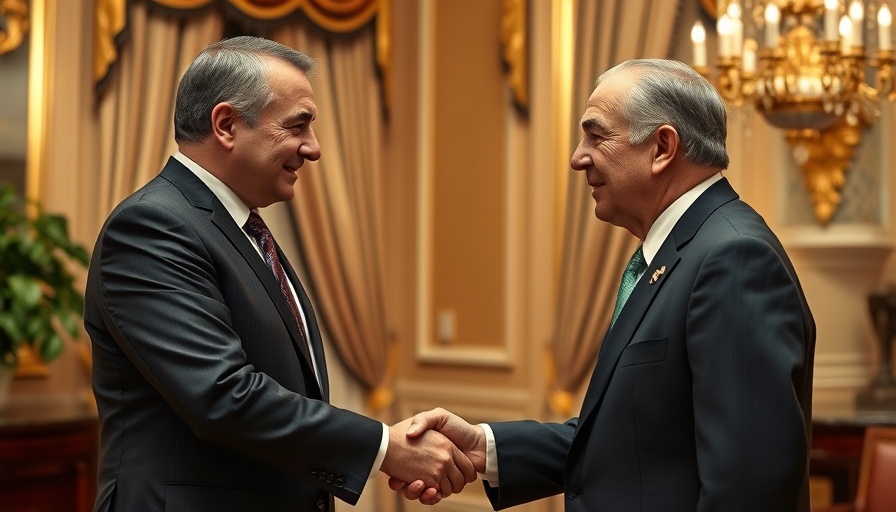
The Implications of Trump's Executive Order to End U.S. Sanctions on Syria
On June 30, 2025, President Donald Trump signed an executive order that marked a significant shift in U.S. foreign policy towards Syria, effectively lifting long-standing sanctions that had hampered the nation's economic recovery and stability. This decision comes after more than a decade of civil war that has devastated the country and its population. In a statement, White House press secretary Karoline Leavitt articulated that the move aimed to 'promote and support the country’s path to stability and peace.'
Understanding the Context: Why Sanctions Were Imposed
The U.S. imposed sanctions on Syria as a response to its involvement in various conflicts and human rights violations under the regime of ousted President Bashar Assad. These sanctions were designed to pressure the government into changing its behavior and to hold accountable those responsible for the atrocities committed during the civil war.
The sanctions have had severe economic repercussion for the average Syrian citizen, contributing to widespread poverty and suffering. By lifting these sanctions for the country (but not for Assad and his close allies), the Trump administration aims to allow Syria to re-enter global financial systems and markets, setting the stage for potential investment and commerce with neighboring countries as well as the U.S.
Global and Regional Reactions
International reactions to Trump's decision have been mixed. Some analysts argue that this could provide much-needed relief for the Syrian economy, while others caution that it may embolden the Assad regime, undermining efforts toward a genuine peace process. Countries in the region, particularly those involved in trade, such as Jordan and Lebanon, have shown a cautious optimism, hoping that this could lead to enhanced economic cooperation.
Nevertheless, many human rights organizations remain critical. They argue that lifting sanctions could signal acceptance of Assad's regime, which is still implicated in humanitarian abuses. The delicate balance of benefiting the population while containing Assad's power presents a complex challenge for the U.S. administration.
Future Implications: Analyzing Potential Outcomes
The move to lift sanctions opens various avenues for economic recovery in Syria. Brad Smith, Treasury’s acting under secretary for terrorism and financial intelligence, indicated that this order aims to catalyze investments from Syria's neighbors and beyond. If neighboring countries recognize mutual benefits, this could encourage regional stability.
However, as history has often shown, the lifting of sanctions does not guarantee a prosperous future for nations like Syria. It remains essential for the international community to monitor how these changes affect the governance and human rights situation in the country.
Public Sentiment and Domestic Concerns
Within the U.S., public sentiment regarding Trump’s decision is largely polarized. Supporters often cite humanitarian concerns, advocating for the need to assist war-torn nations. Critics, however, emphasize that the administration may be neglecting the lessons learned from previous conflicts, where post-sanction scenarios have sometimes led to renewed hostilities.
Engaging in discussions about responsible foreign policy and the repercussions of lifting sanctions is increasingly relevant. By fostering open dialogues on such matters, it becomes possible to identify strategies that prevent further escalation and advocate for accountability.
Conclusion: Navigating a Complicated Landscape
President Trump’s executive order to lift sanctions highlights a significant shift in U.S.-Syria relations, presenting both opportunities and potential pitfalls. As the world watches closely, the upcoming months will be crucial in determining the effectiveness of this approach in fostering peace and stability in Syria.
 Add Row
Add Row  Add
Add 




 Add Row
Add Row  Add
Add 

Write A Comment